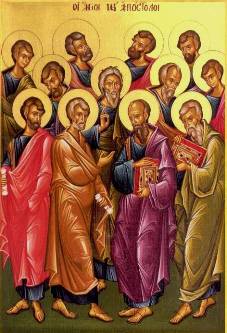Historical trajectory of the Apostles’ Creed

The Apostles’ Creed, according to legend, was composed by the Apostles on the tenth day after the Ascension under the inspiration of the Holy Spirit. The legend no doubt added prestige to the creed, but it was effectively exposed as legendary by Lorenzo Valla (c. 1407-1457) and subsequent scholars. The creed does, however, have a legitimate claim to its title on the basis of the fact that all of its articles are to be found in the theological formulas that were current circa A.D. 100.
The ancestry of the Apostles’ Creed can be traced to a creed that developed at Rome around the end of the 2nd century (known as the Roman Symbol). The origin of this creed is not clear, but its early form is likely preserved in the Interrogatory Creed of Hippolytus’ Apostolic Tradition (c. 215), the creed submitted by Marcellus to Julius I (340), and Rufinus’ Commentary on the Apostles’ Creed (c. 404), which was based on the baptismal creed of his own church, Aquileia, but in which he is careful to point out divergences from the Roman Creed.
The Roman Symbol (late 2nd century, as given by Rufinus
I believe in God the Father almighty;
and in Christ Jesus His only Son, our Lord,
Who was born from the Holy Spirit and the Virgin Mary,
Who under Pontius Pilate was crucified and buried,
on the third day rose again from the dead,
ascended to heaven,
sits at the right hand of the Father,
whence He will come to judge the living and the dead;
and in the Holy Spirit,
the holy Church,
the remission of sins,
the resurrection of the flesh
(the life everlasting).
Note: The last clause is to be found in the Greek but not in the Latin
For the rest, see:
http://deovivendiperchristum.wordpress.com/2013/10/20/historical-trajectory-of-the-apostles-creed/
No comments:
Post a Comment